Gleaming in the Gloaming: Roman Church Mosaics III
Byzantium on the Esquiline Hill, the Chapel of St Zeno at Santa Prassede.
As ever all photographs are my own.
Last time I spoke of mosaics here it was of the sixth century mosaics at Saints Cosmas and Damian. At the end of August, on my way down from the Veneto, I made a return to Ravenna for the first time in nearly a decade for mosaics, and for passatelli in brodo and Lambrusco. August isn’t really broth weather but I can’t pass through la Romagna without a bowl, and good Lambrusco is the finest accompaniment. (Good Lambrusco is excellent, I urge you to try it; it bears no relation to the syrupy exported stuff which featured in the teenage parties of my youth).
Thus fortified, I visited all eight of Ravenna’s UNESCO sites in a reasonably relaxed manner over an afternoon and the following morning. Other than Santa Apollinare in Classe and the Mausoleum of Theodoric they are all in the centre of town, and the Mausoleum is in easy walking distance.
If doing a day trip by public transport I’d focus on the five sites in town (the Neonian Baptistery, the Arian Baptistery, San Vitale, the Mausoleum of Galla Placidia, Sant’Apollinare Nuovo, and the Archbishop’s Chapel). If you can, do try to fit in the Mausoleum of Theodoric as well.
It really is very interesting: a squat Ostrogothic distillation of Roman architecture and Eastern Mediterranean influences constructed in eminently solid blocks of Istrian limestone. If you don’t have time and/or transport I’d pass on Sant’Apollinare in Classe at what was once the bustling port; pazienza, one can’t see everything.
Returning to the exquisite Byzantine mosaics in Ravenna had me thinking of one of my favourite Roman chapels, the Chapel of St Zeno at the church of Santa Prassede on the Esquiline Hill. Within sight of Santa Maria Maggiore, this tiny jewel-like chapel, built by Pope Paschal I as a funerary chapel for his mother Theodora, is the most complete Byzantine mosaic decoration in Rome.
Pope Paschal was elected in 817, three years after the death of Charlemagne, King of the Franks. Charlemagne’s support for the beleaguered Roman Church had been invaluable. He had been hailed as the new Constantine, and the city inherited by Paschal was one of optimistic renovatio, a sort of mini-Renaissance which sought to echo the glories of the early Church.
Thus Pope Paschal planned Santa Prassede as small-scale copy of the Constantinian basilica of St Peter’s in the Vatican, complete with an internal courtyard between the main entrance and the internal façade. The dedication is in keeping with this idea of revival: Santa Prassede (or St Praxedes in English, Robert Browning wrote of it) is traditionally said to have been the sister of Santa Pudenziana, both daughters of the senator Pudens who had harboured St Peter nearby.
Both the church and the tiny chapel of Saint Zeno in the right-hand nave were to be decorated in mosaic. On the one hand this reflected a renovatio of the ancient Roman art of mosaic facilitated by the prosperity engendered by Charlemagne’s support; on the other it was made possible by the arrival in Rome of Byzantine mosaic artists fleeing the Second Iconoclasm in Byzantium. The mosaics at Santa Prassede can then be considered both as the revival of the ancient art of mosaic, and of its survival, adapted to the service of Christianity and filtered through the Byzantium, the Christian heir to the Eastern Roman Empire, and ultimately returning to Rome.

When entering Santa Prassede by the side entrance (the only one regularly in use) on via di Santa Prassede, turn left for the chapel of St Zeno. Put some coins in the meter by the entrance to the chapel to turn the lights on before going in, and surround yourself in the rich brilliance of the mosaics that cover every bit of this space. As your eyes move around the chapel, the undulating forms of gilded tiles laid by hands dead for over a millennium offer varied reflections.
The chapel is cross-vaulted; the vault’s support is indicated by the recycled ancient columns that are almost free-standing, barely supporting anything, just the sort of thing that would have had Vitruvius, the Roman architect par excellence, with his stress on functionality, spinning in his grave.
From the three-dimensional gilded capitals spring two-dimensional angels, reaching up to support the image of Christ Pantocrator (from the Greek, ‘all powerful’). These have a clear link to the late fifth century mosaics at the Archbishop’s Chapel in Ravenna three centuries earlier.
A clear thread connecting to Byzantine Ravenna can also be seen directly opposite the entrance wall. The figures of St John the Baptist and the Virgin indicate the (east-facing) window between them. This is thought to represent the Byzantine iconographical tradition of the deesis.
From the Greek meaning ‘entreaty’ the deesis shows the John the Baptist and the Virgin gesturing towards an image of Christ. In this case the image of Christ is represented by the light of the window. John the Evangelist says Christ described himself as the “Light of the World; he that followeth me shall not walk in darkness but shall have the light of life” (John 8:12), and so the light from the window represents the figure of Christ.

This reading would have been well-known by the artists, and of course by the papal patron: in the fourth century, St Augustine had referred to this quotation, and added weight to it, by saying that Christ should not be considered as a simply metaphorical light; by the fifth century the description of Christ as “Lumen de lumine” had entered the Mass.
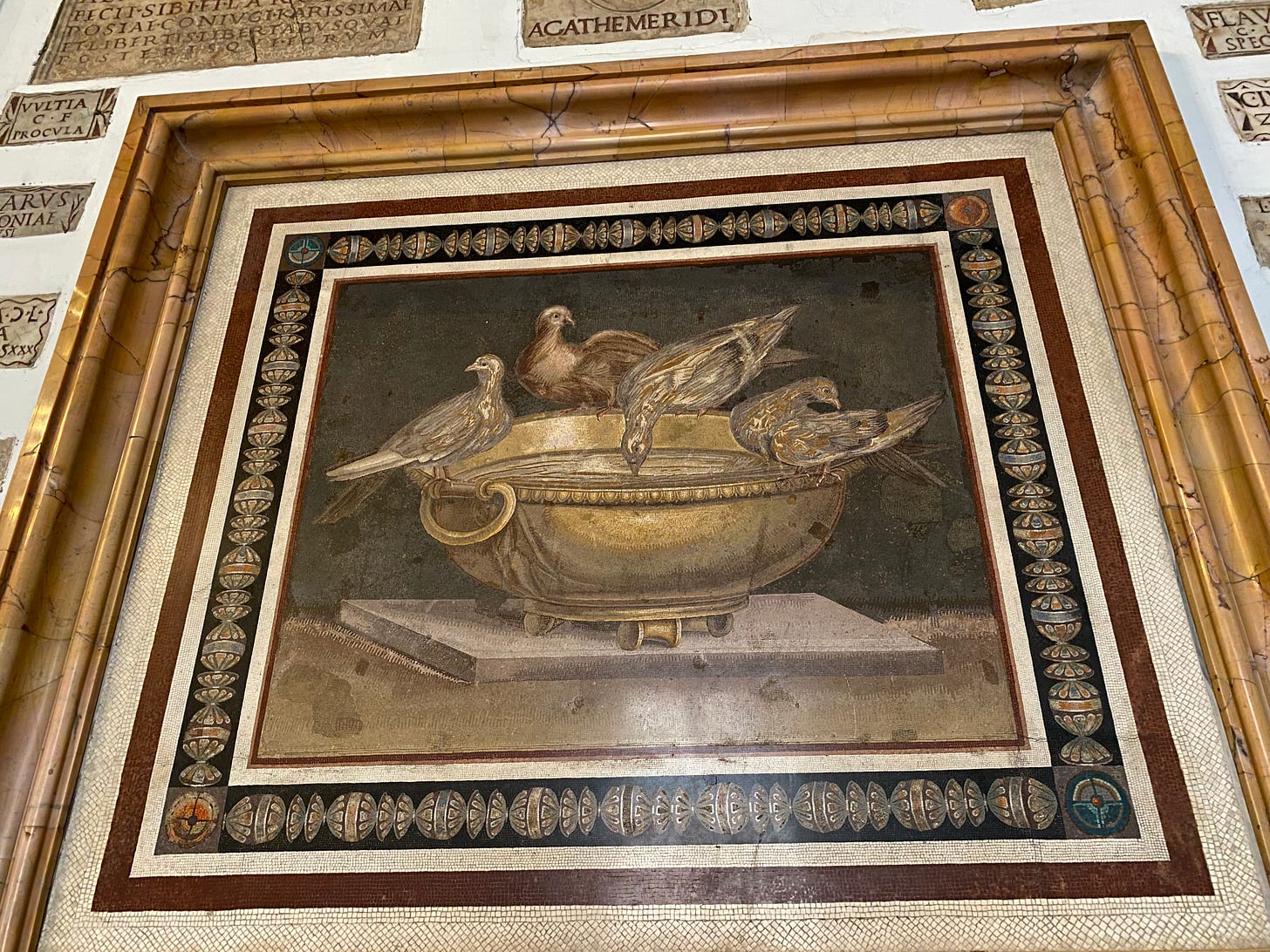
The gleaming mosaics at the Chapel of St Zeno are themselves a manifestation of this divine light. A glorious glimpse of a Roman inheritance, the serendipitous fusion of Byzantine iconoclasm, and of the economic effects of Carolingian support lurking, somewhat improbably, between an Irish pub and a kebab shop not far from Termini station.
Santa Prassede,
via di Santa Prassede
Opening hours for chapel visits outside Mass: Mon-Sat 10am-noon; 4pm-6pm; Sun 10am-11am; 4pm-6pm




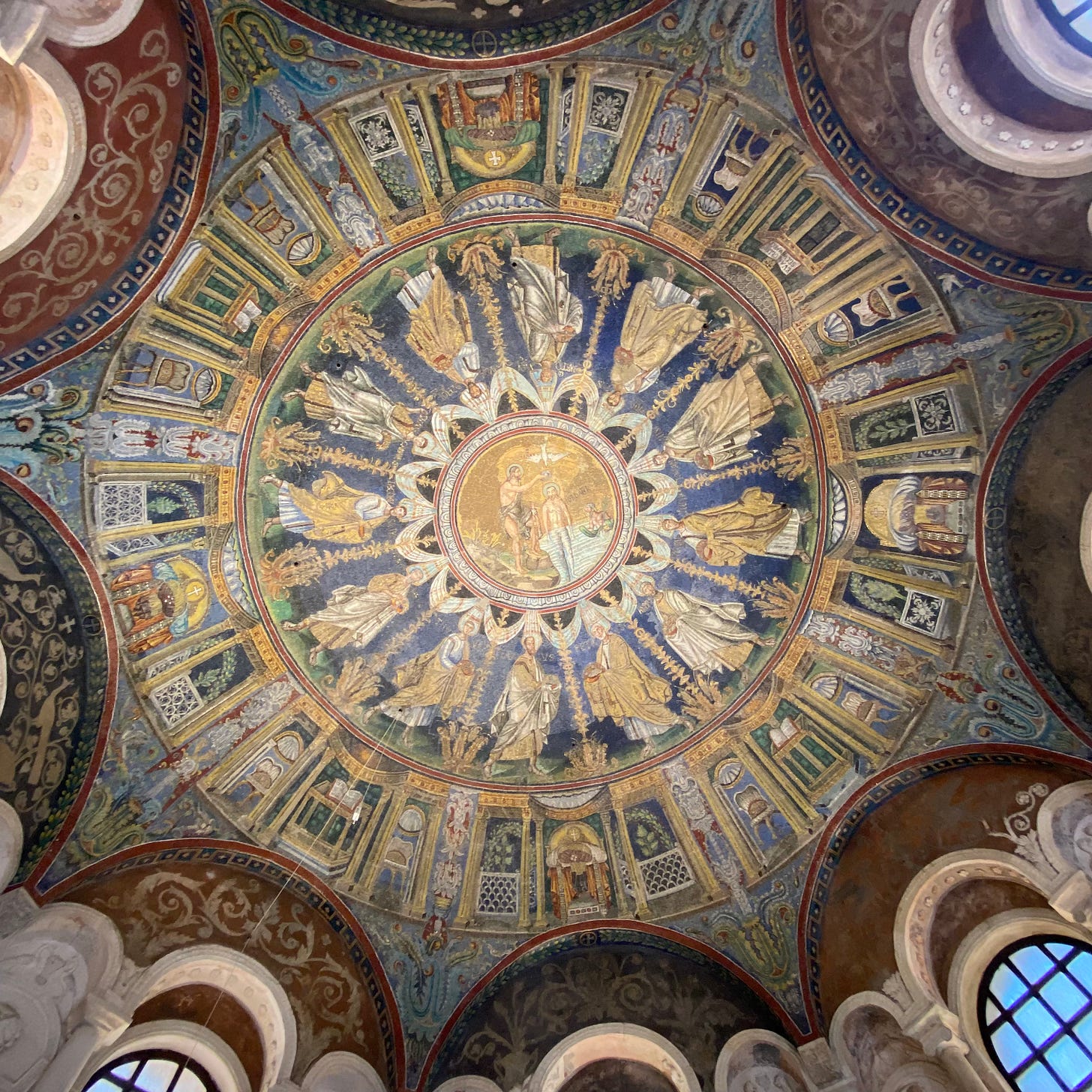
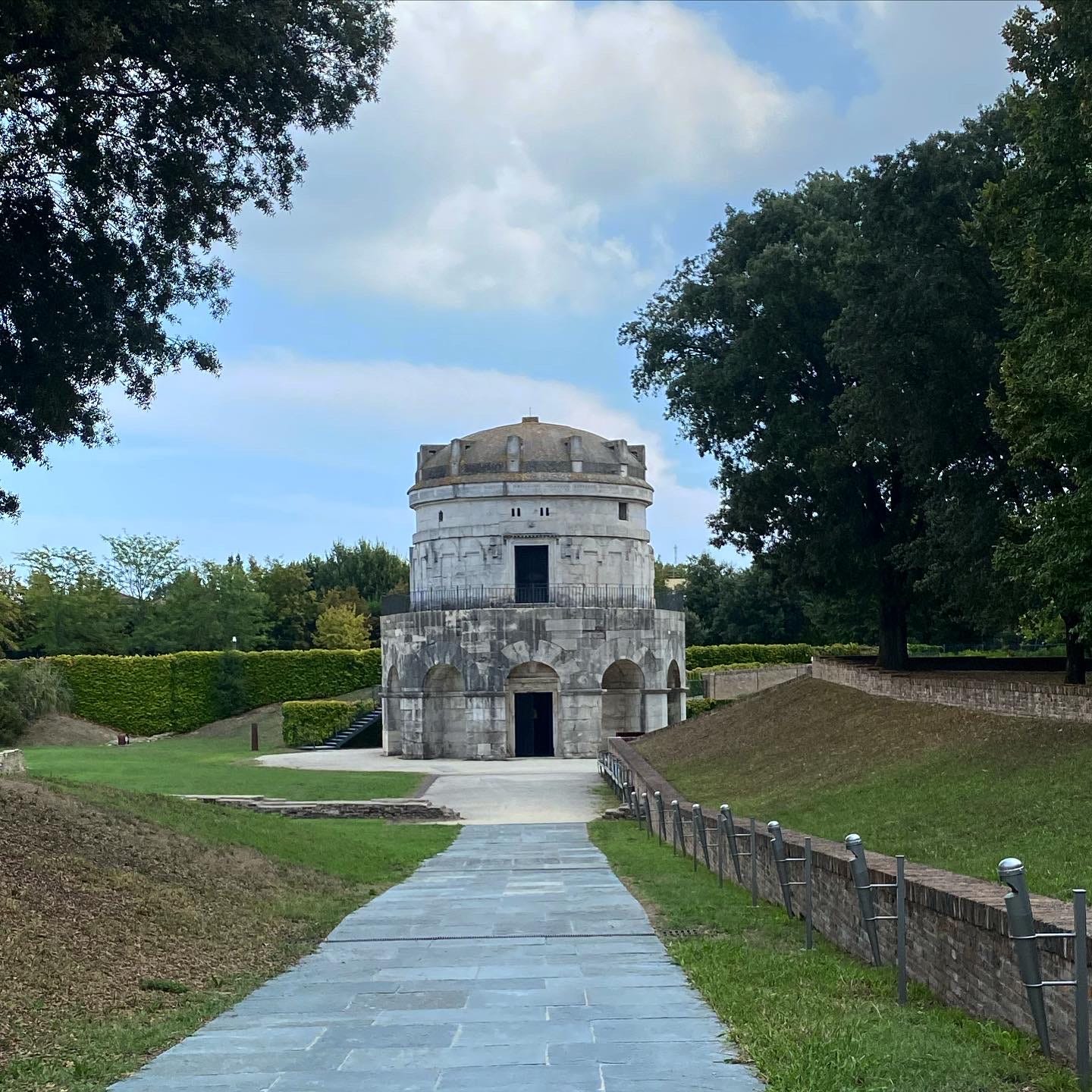

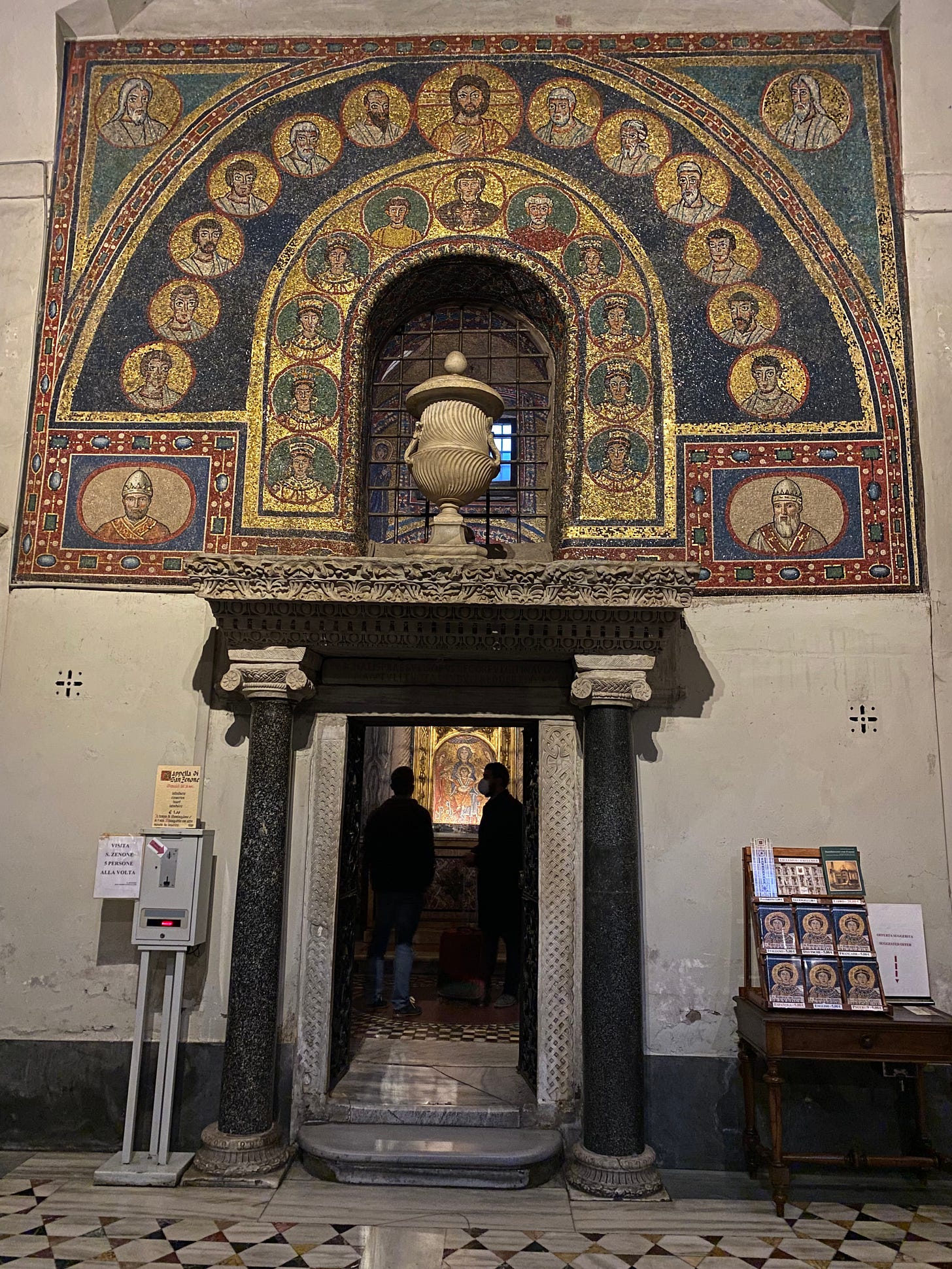

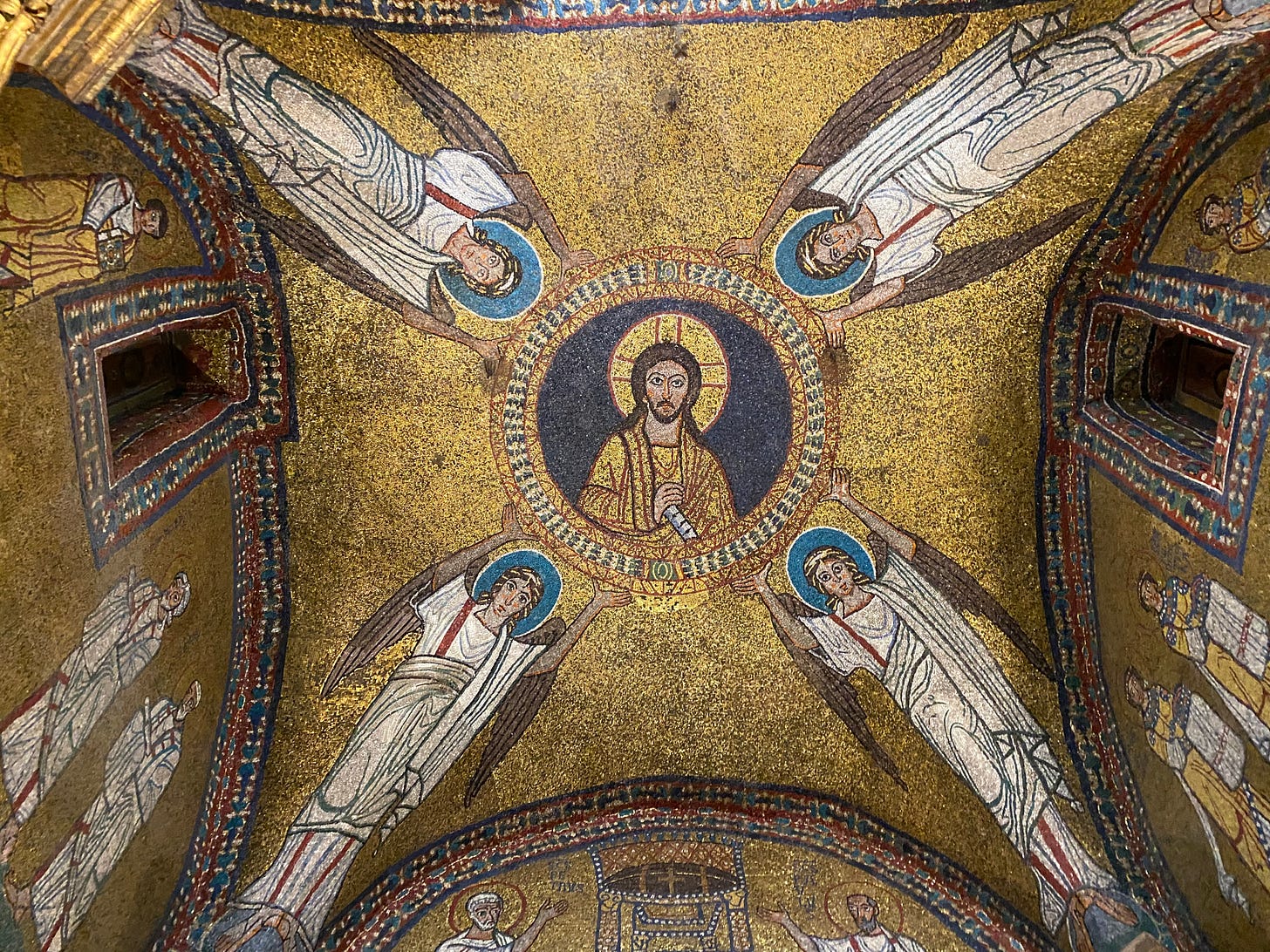

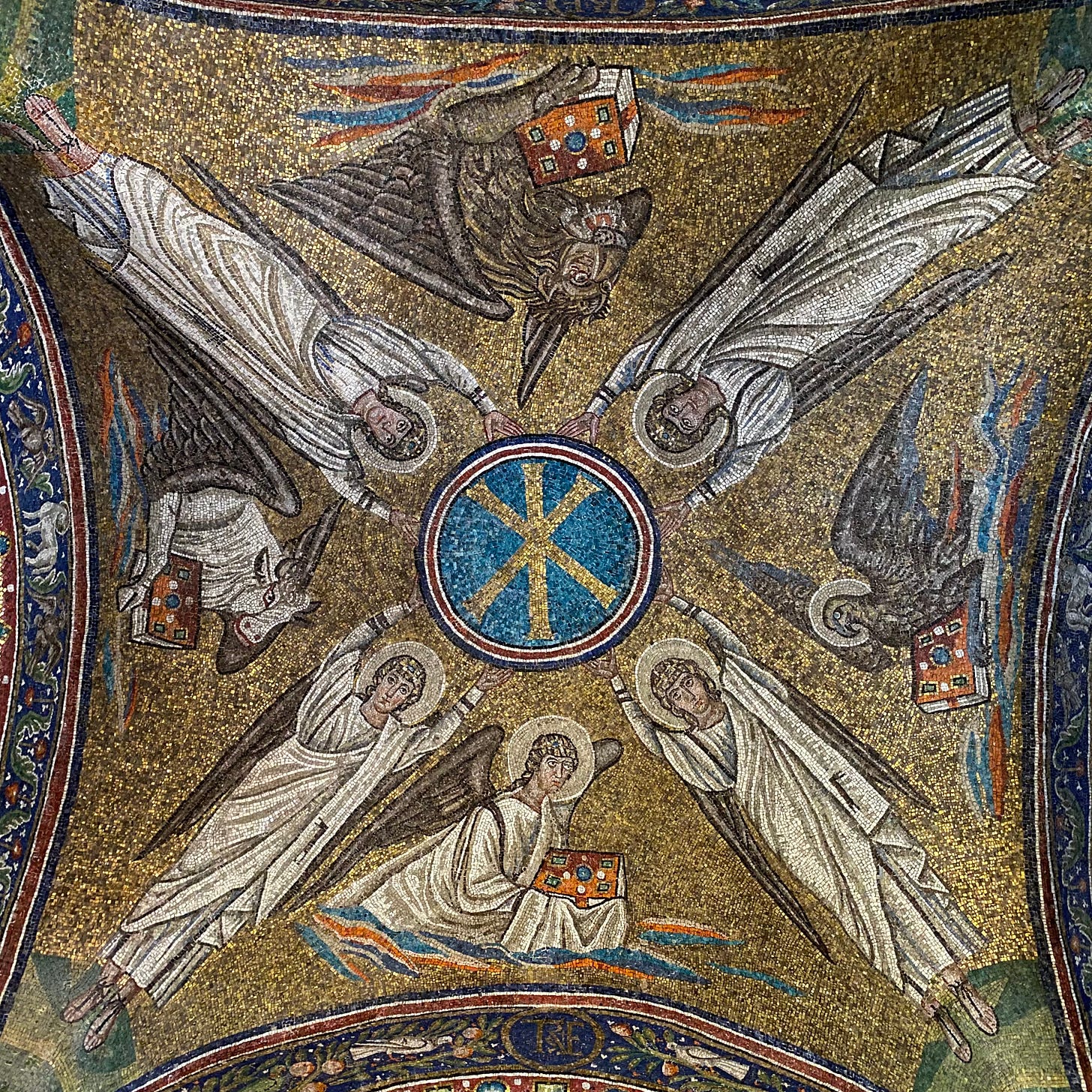
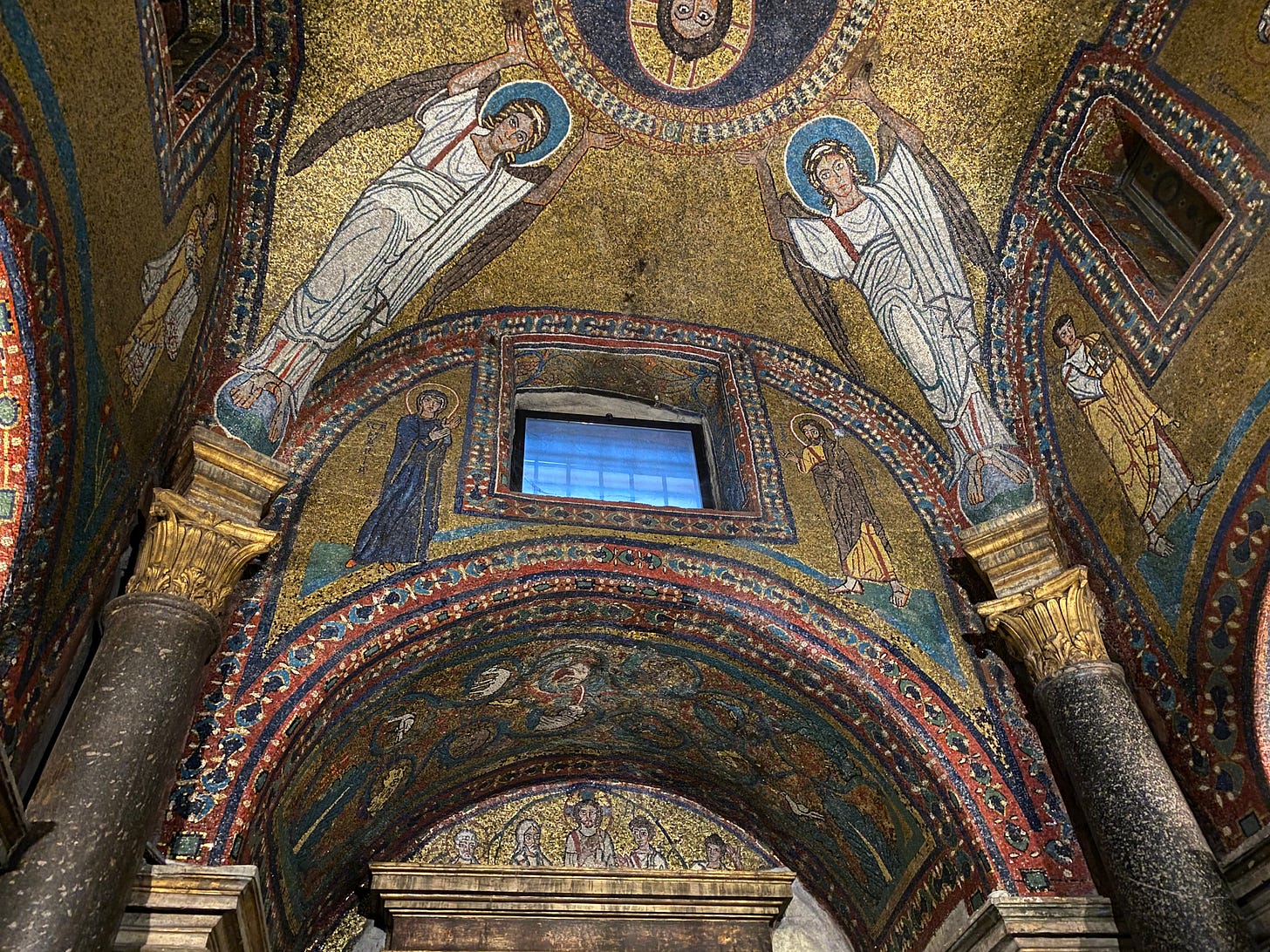

Fascinating reminder of fabulous visits we have been fortunate to make this year. All the more uplifting given our current surroundings of a garage showroom waiting for the car to be fixed! 😊
Thank you for this tour inside the church. As I remember from my last visit there’s spolia everywhere, outside and inside.